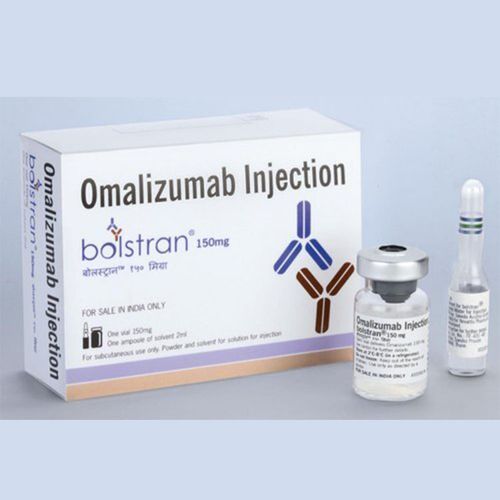The US Food and Drug Administration (FDA) is calling for the strongest warning possible to be added to an asthma drug's label, due to the potential for a life-threatening allergic reaction. The new alert for omalizumab (Xolair), marketed by Genentech Inc., draws attention to anaphylaxis as a possible side effect of the medication.
Anaphylaxis is a sudden, potentially life-threatening allergic reaction that can include trouble breathing, tightness in the chest, dizziness, fainting, itching and hives and swelling of the mouth and throat.
Background
Xolair was approved in 2003 to treat adults and adolescents 12 years and older with moderate to severe persistent allergic asthma whose symptoms can't be fully controlled with inhaled steroids.
According to one study, adding Xolair to a patient's medication regimen helps cut emergency medical visits. It also decreases the rate of asthma exacerbations.
Anaphylaxis due to an injection of Xolair has occurred at a rate of about one in 1,000 patients, the FDA said.
The new warning discusses the possibility of patients developing anaphylaxis after any dose of Xolair, even if there was no reaction to the first dose. Also, the reaction may occur up to 24 hours after administration of the drug.
Recommendations
"I think more allergists are going to equip patients with EpiPens (anaphylaxis remedies) to be able to utilize them, based upon the black box warning. It would be prudent that anybody who's on Xolair make sure they get one of the commercially available epinephrine sources like an EpiPen," said Dr. David Weldon, director of Allergy and Pulmonary Lab Services at Scott & White Clinic, in College Station, Texas.
And Yucynthia Jean-Louis, president of the Asthma and Allergy Foundation of America (AAFA), said the group recognizes the importance of new treatments such as Xolair in fighting moderate to severe asthma. "AAFA encourages the companies and the FDA to continue to work together to assure a product label that is in the best interest of patients," she said.
Fish Oil May Fight Asthma?
Athletes who took 5.4 grams of omega-3 fatty acids daily had an 80% improvement in lung capacity, a benefit for athletes with exercise-induced asthma.
Theory: Omega-3s, found in fish oil, may reduce inflammation, so lungs dilate more easily.
Smoking Quadruples Teens' Asthma Risk
Adolescents who smoke are about four times more likely to develop asthma during their teen years than those who don't smoke, researchers warn. "The results of our study provide clear evidence that regular smoking increases the risk for asthma and that important chronic adverse consequences of smoking are not restricted to individuals who have smoked for many years," said Dr. Frank D. Gilliland, of the Keck School of Medicine at the University of Southern California.
The Study
Gilliland's group collected five to eight years of data on more than 2,600 grade school children with no prior history of wheezing or asthma. The team uncovered 255 cases of new-onset asthma. Children who smoked 300 or more cigarettes a year were nearly four times more likely to develop asthma than nonsmokers.
Surprisingly, the researchers found that this increased asthma risk in smokers was stronger in children with no history of allergies than in those who had allergies.
"The clinical and public health implications of our findings are far-reaching. Effective tobacco control efforts focusing on the prevention of smoking in children, adolescents and women of childbearing age are urgently needed to reduce the number of these preventable cases of asthma," Gilliland said.
